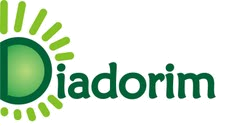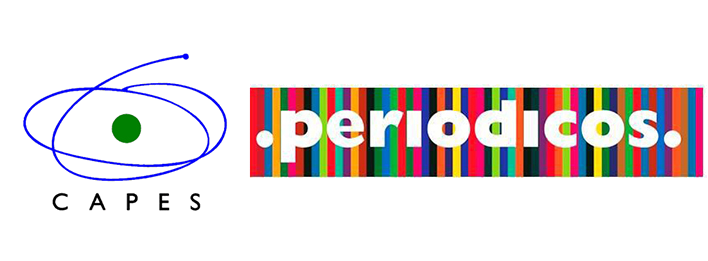Brand identity as a tourist attraction from the perception of tourism managers
DOI:
https://doi.org/10.29149/mtr.v8i2.7656Keywords:
tourism manager, brand identity, image, perception, Rio Grande do NorteAbstract
The tourist activity presents high values in the country, especially in the high season months, the city of Natal/Rio Grande do Norte (RN) and the beach of Ponta Negra/RN present good positions in the tourism rankings. The study begins by bringing contributions on brand, tourism and image and aims to analyze the brand value of Ponta Negra/RN as a tourist attraction from the perception of tourism managers, based on the assumption that the beach has been losing its value according to the perception of professionals. For methodological purposes, the research is characterized by a qualitative, exploratory and descriptive approach, having as its target audience professionals with a bachelor degree in Tourism who work, live or have visited Ponta Negra/RN. As results some reflections emerged throughout the research, such as the questioning about tourism professionals not mentioning local attractions as alternatives to Ponta Negra/RN. It was noticed that the beach keeps its value, but it needs tools so that this good positioning is maintained in the future and does not confirm the hypothesis that Ponta Negra/RN is seen as an attractive place and with tourist value, but that factors such as infrastructure, insecurity, among other points, are influencing the fall of its position among the attractions of the city and in the way it is perceived by the tourism managers. It was possible to observe that the image of Natal/RN and the Ponta Negra beach/RN continue well positioned among the tourism managers and among the tourists, given the results of the questionnaire combined with the results in the official documents, concluding that the beach has not been losing its value, but some factors may influence the fall of its image in the future. Thus, the study can be expanded to other professionals, such as tourism guides, through a qualitative research, in order to approach the theme with more detail on the subject and the results.
References
Aaker, David A. (2007). Construindo marcas fortes. São Paulo: Artmed.
Azambuja, V. A. (2015). A construção da identidade de marca de Gramado-RS como “destino turístico modelo”. 156 f. Dissertação (Mestrado em Turismo) - Universidade de Caxias do Sul, Caxias do Sul.
Babić-Hodović, V. (2014). Tourism destination branding – challenges of branding Bosnia and Herzegovina as tourism destination. Acta geographica Bosniae et Herzegovinae, Sarajevo, v. 1, p. 47-59. Recuperado em 15 novembro, 2019, de https://www.geoubih.ba/publications/Acta1/Article-Vesna%20Babic-Hodovic.pdf
Barretto, M. (1995). Manual de Iniciação ao Estudo do Turismo. Campinas: Papirus. 56 p. ISBN 85 308 0343-4.
Benedek, I. (2017). Measuring Place Brand Equity:A Review of Current Models. Journal of Media Research,Vol. 10 Issue 1(27), pp. 42-57. DOI:10.24193/jmr.27.5
Brasil (2012). Lei Nº 12.591, de 18 de janeiro de 2012. Recuperado em 26 junho, 2022, de http://www.planalto.gov.br/ccivil_03/_ato2011-2014/2012/lei/l12591.htm
Costa, J. (2011). A imagem da marca: Um fenômeno social. Tradução. Osvaldo Antonio Rosiano. São Paulo: Rosari.
Fecomércio. (2018). Relatório do Perfil do Turista: Alta Estação 2018. Recuperado em 16 novembro, 2019, de http://fecomerciorn.com.br/pesquisas/perfil-do-turista-2018/relatorio-perfil-do-turista-2018/
Fernandes Silva, F., Cavalcante Dias, M. C., Fernandes Ferreira, L. V., & Marques Júnior, S. (2017). LOVEMARKS. Un análisis de la marca de restaurantes a partir del modelo de Kevin Roberts. Estudios y Perspectivas en Turismo, vol. 26, núm. 4, octubre, pp. 905-924.
Gaio, S., & Gouveia, L. B. (2007). O Branding Territorial: uma abordagem mercadológica à Cidade. [S.l.]: Revista A Obra Nasce. pp 27-36 p. Recuperado em 02 novembro, 2019, de http://homepage.ufp.pt/lmbg/com/brandingterrit_obranasce07.pdf
Keller, K. L., & Machado, M. (2006). Gestão Estratégica de Marcas. [S.l.]: Perason, 312 p.
Ministério do turismo. (2015). Código de ética mundial para o Turismo, 2015. Recuperado em 25 novembro, 2019, de http://www.turismo.gov.br/sites/default/turismo/o_ministerio/publicacoes/downloads_publicacoes/PREVIEW_MTUR_Codigo_de_Etica_Turismo_120_210mm_Portugues.pdf
Ministério do turismo. (2019a). Anuário Estatístico de Turismo 2019 – Ano Base 2018. Recuperado em 13 novembro, 2019, de http://www.dadosefatos.turismo.gov.br/2016-02-04-11-53-05.html
Ministério do turismo. (2019b). Desembarques Domésticos. Recuperado em 27 novembro, 2019, de http://www.dadosefatos.turismo.gov.br/estat%C3%ADsticas-e-indicadores/desembarques-domesticos.html
Ministério do turismo. (2019c). Marketing de Destinos Turísticos. Recuperado em 15 novembro, 2019 de http://www.turismo.gov.br/publicacoes/item/60-marketing-de-destinos-turisticos.html
Ministério do turismo. (2019d). Pesquisa de sondagem empresarial, 2019. Recuperado em 13 novembro, 2019, de http://www.dadosefatos.turismo.gov.br/component/k2/item/389-sondagem-empresarial ag%C3%AAncias-e-organiza%C3%A7%C3%A3o-de-viagens-segundo-semestre2019.html
Ministério do turismo. (2019e). Pesquisa de sondagem empresarial, 2019. Recuperado em 13 novembro, 2019, de http://dadosefatos.turismo.gov.br/component/k2/itemlist/category/17.html
Neto, A. P. (2017). Personalidade de Marca em Meios de Hospedagem. 2017. 146 f. Dissertação (Mestrado em Turismo) - Universidade Federal do Rio Grande do Norte, Natal, 2017.
Perez, C. (2004). Signos da marca: expressividade e sensorialidade. São Paulo: Pioneira Thomson Learning.
Rejowski, M., & Ansarah, M. G. R. (1994). CURSOS SUPERIORES DE TURISMO E HOTELARIA NO BRASIL. Turismo em Análise, [s. l.], v. 5, n. 1, p. 116-128.
Roberts, K. (2004). Lovemarks: o futuro além das marcas. São Paulo: M. Books do Brasil.
Semprini, A. (2006). A marca pós-moderna: poder e fragilidade da marca na sociedade contemporânea. Tradução de Elisabeth Leone. São Paulo: Estação das Letras.
Shimp, T. A. (2009). Comunicação integrada de Marketing: Propaganda e Promoção. 7. ed. Porto Alegre: Bookman, 648 p. ISBN 978-85-7780-351-4.
Silva, L. F., & Rio, M. (2016). Imagem de Marca de Destinos Turísticos: análise da imagem perceptual de duas cidades património mundial da humanidade da Unesco. Rev. Anais Bras. de Est. Tur./ ABET, Juiz de Fora, v.6, n.3, pp.67–75, Set./Dez.
Teixeira, R. M. (2001). Ensino superior em Turismo e Hotelaria no Brasil: Um estudo exploratório. Turismo em Análise, São Paulo, v. 12, p. 8-31, 2 nov.
Veríssimo, J. M. C., Tiago, M. T. B., Tiago, F. G., & Jardim, J. S. (2017). Tourism destination brand dimensions: an exploratory approach. Tourism & Management Studies, Algarve, v. 13, ed. 4, p. 1-8. DOI 10.18089/tms.2017.13401. Recuperado em 15 novembro, 2019, de https://www.tmstudies.net/index.php/ectms/article/view/997/pdf_65
Wheeler, A. (2008). Design de identidade de marca: um guia completo para a criação, construção e manutenção de marcas fortes. Porto Alegre: Bookman.
Downloads
Published
How to Cite
Issue
Section
License
Copyright (c) 2022 Mariana Bárbara de Souza, Islaine Cristiane Oliveira Gonçalves da Silva Cavalcante

This work is licensed under a Creative Commons Attribution 4.0 International License.
Authors who publish with this journal agree to the following terms:
- Authors retain copyright and grant the journal, without cost for the journal, right of first publication with the work simultaneously licensed under a Creative Commons Attribution License that allows others to share the work with an acknowledgment of the work's authorship and initial publication in this journal.
- Authors are able to enter into separate, additional contractual arrangements for the non-exclusive distribution of the journal's published version of the work (e.g., post it to an institutional repository or publish it in a book), with an acknowledgment of authorship and its initial publication in this journal.
- Authors take full responsibility for their opinions expressed in the works published in this journal.
















